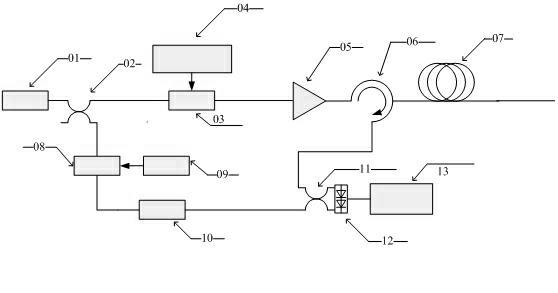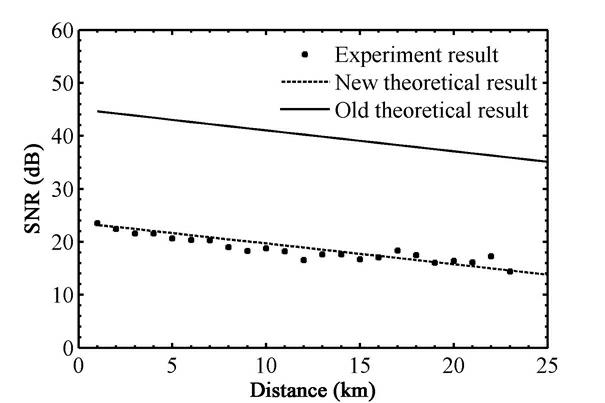Method for precisely estimating signal to noise ratio of EOM (Electro-Optic Modulator) pulse modulated BOTDR (Brillouin Optical Time Domain Reflectometer)
A technique of pulse modulation and accurate estimation, applied in the direction of instruments, etc., can solve the problems that affect the estimation accuracy of the signal-to-noise ratio and not be considered, and achieve the effect of improving the estimation accuracy
- Summary
- Abstract
- Description
- Claims
- Application Information
AI Technical Summary
Problems solved by technology
Method used
Image
Examples
Embodiment Construction
[0027] The present invention will be further described and described below in conjunction with the accompanying drawings.
[0028] figure 1 A schematic diagram of the BOTDR system used for the experiment is shown. The output light of the narrow-linewidth laser 01 is divided into two paths by the polarization-maintaining fiber coupler 02, one path is incident on the EOM03, and the pulsed light is generated by the pulse signal generator 04, and then the pulsed light is amplified by the erbium-doped fiber amplifier 05 and passed through the circulator 06 It is injected into the sensing fiber 07 to generate backward self-published Brillouin scattered light; the other path passes through EOM08 and microwave signal source 09 for frequency shifting, and the polarization scrambler 10 is used to reduce polarization noise, and the local reference light and self-published Brillouin scattered light The light is coherent through the coupler 11, the photodetector 12 is used for photoelectr...
PUM
 Login to View More
Login to View More Abstract
Description
Claims
Application Information
 Login to View More
Login to View More - R&D
- Intellectual Property
- Life Sciences
- Materials
- Tech Scout
- Unparalleled Data Quality
- Higher Quality Content
- 60% Fewer Hallucinations
Browse by: Latest US Patents, China's latest patents, Technical Efficacy Thesaurus, Application Domain, Technology Topic, Popular Technical Reports.
© 2025 PatSnap. All rights reserved.Legal|Privacy policy|Modern Slavery Act Transparency Statement|Sitemap|About US| Contact US: help@patsnap.com



